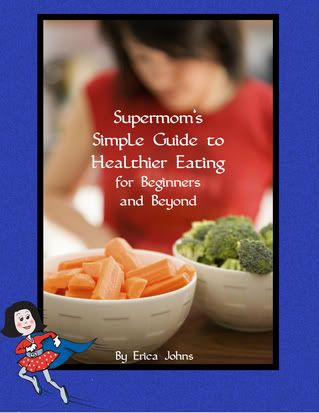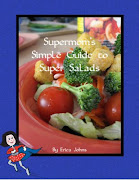So earlier this week I tried my hand at cheesemaking, using the mozarella kit that I purchased from cheesemaking.com. We bought a gallon of milk (we used 2%) and got to work. The description of the kit had said that it would help you make about a pound of mozarella and some ricotta cheese as well, all in about a half hour.
Yeah, well, don't believe everything they tell ya. ;)
First of all, it takes quite awhile to heat a gallon of milk to 88 degrees without scorching it on the bottom. So, my children, who had previously been set up to help me make this cheese and observe this scientific wonder :) gradually faded away to the back yard while I stirred, and stirred, and stirred a slowly-heating pot of milk. :)
Eventually the milk got warm enough and we moved on to the stage where you add another thing (I can't remember if it's the rennet that you add now, or the citric acid....one gets added at the beginning, one at the point where the heating is done) and then wait for the milk to firm up into curds and whey. (Hellooooooo Little Miss Muffet!) This took about 15 minutes for us (or, more time for uninspired children to play on the swingset) and then I got into the highlight of the experience, which was trying to *separate* the curds from the whey. Also known as the "Why did I think this was a good idea and why did I think it would be fun?" stage.
I used a slotted spoon to try to fish out the curds, which are like milky, slippery jello pieces floating in a yellowy sea of liquid (whey). As you fish out the curds, you get a lot of whey with it. According to what I learned from watching the cheesemaking DVD, the curds are quite fragile, so if you do not treat them with tender loving care they will break apart and end up being too small to corral into your cheesemaking process.
Again, this portion of the process is not on that exactly keeps children on the edge of their seats. They walked in, saw me fishing out curds, pronounced it "looks gross!" and went back outside. Who could blame them? I was up to my elbows attempting to fish out curds for probably 20 minutes (which feels like a lot longer when you're doing it, let me tell ya!).
I had a lot of trouble trying to pour off that pesky whey. You'd think it would be a no-brainer, but for me, it wasn't. I think that by the time I finished I learned that I could have worried less about the whey and just moved on to the next step without trying to be too thorough about it.
Eventually I got annoyed enough with the whole curds-and-whey thing that I did something that they tell you not do to on the DVD, which is to pour the rest of the curds and whey into a colander that was inside a bowl. Apparently some curds are just too fragile to even be poured this way, but I felt like it was either that, or stand there all day fishing for my long-awaited curds, or waste a whole lot of material that was supposed to be turning into cheese. I was willing to throw cheesemaking caution to the wind and take my chances.
I got a good amount of curds from the colander, and then I used the cheese cloth to line the colander and poured the whey through it again, so that I could catch all of those teeny-weeny pieces of curd that I had traumatized thus far in the process. That worked out fine and I probably got another cup and a half of curds that way.
After you get your curds together you microwave them for about a minute, then do some kneading or stirring, and this is where the curds start sticking together and it becomes a lot easier to pour of the whey. (Next time I'll worry less about the whey and just get on to microwaving.) You microwave a little, add in your cheese salt, then stir and knead and stretch a little, microwave again, etc. until you get to the point where the whey is gone, and your cheese is now looking like it should. By the end it is shiny and stretchy and doesn't break apart even when you stretch it for a long way. At that point I started feeling pretty excited. "I made cheese! Yessirree I did!"
When your cheese is done, you plunge it into icy cold water to cool. One tip that I thought was fun was to stretch the cheese into lines (log shapes) before cooling it, and you end up with string cheese. I also did some twists of cheese as well. And the rest I just left in a circle.
It tastes very good, just like it should. Nothing weird about it, nothing objectionable in any way.
It took me about an hour and a half, and that didn't even include ricotta, which I found out was not something that could be done with the leftover whey as I thought it would, but required a whole other gallon of milk. And, frankly, I just didn't care at that point. :)
I did save all of the whey by pouring it right back into the gallon jug. I was amazed to see that there was about 3/4 of a gallon of whey. Seems like a lot of waste to me. Apparently you can use this in any recipe that needs sour milk or buttermilk, and it can be used when making baked goods, pancakes, etc. Of course I made pancakes the other day and forgot to use the whey, but am thinking of making a big batch of pancakes for the freezer, so I can use some of it up then.
Overall, it was a learning experience, and although it didn't go super-easy or super-fast, I feel like I will enjoy trying my hand at cheesemaking again. It would be a decent activity to do while doing some other kitchen things and chatting with my husband. There were some really interesting ideas and suggestions for things you can do with the cheese where you combine the cheese with herbs and so on that seemed like they might be really yummy. (and in true "If You Give a Moose a Muffin" tradition, this made me think that I really, really need to get started on growing my own herbs....ha ha!!)
I don't consider cheese (or milk) to be all that healthy, but have found that it is something we just aren't ready to entirely part with yet. Now that I know about the various chemicals that are added to cheeses that are sold in the store (brick cheese as well as shredded) I am more motivated to try to get better at this cheesemaking thing and see if I can fit this into our regular life.
The DVD (included with the kit, as well as a very nice book with lots of cheese recipes and instructions) of the cheesemaking was very interesting and I learned about many cheeses that I had not heard of or been familiar with. I think that the DVD is a lot more interesting for children since it edits out all of the boring wait time involved, which is a whole lot of it.
I did get a hard cheese kit as well, so that I can make my own cheddar, colby, and so on. I think I will need a cheese press to get into that, so haven't tried it out yet.
Each kit has enough ingredients to make many pounds of cheese (I think between the two kits I have enough material to make 100 pounds of cheese!) so when I look at it like that, it was a decent investment. I plan to keep my radar up for bargain organic milk ever time I pass by Kroger.
I did notice that they sell the Yogotherm at cheesemaking.com, and they also have *kefir* which I mentioned a few weeks ago as having been on my radar. Apparently in the yogotherm you can make cream cheese, sour cream, yogurt, buttermilk, kefir, and a bunch of other fancy-shmancy sounding soft cheese that I am not cultured enough (ha ha punny!) to be familiar with. So, I will have to think about whether or not it would be worth it to me to try that out as well. ($69.95---I'll have to be pretty sure, won't I?)
I do think that cheesemaking has the potential to be a fun activity and to provide for some creativity that could be a fun thing to dazzle people with at the meal table. Loving to be an enigma as much as I do, adding "I make homemade cheese" to the list is quite appealing, I must say. :) (even cooler than "I make homemade bread and grind my own wheat"!)
Subscribe to:
Post Comments (Atom)










No comments:
Post a Comment